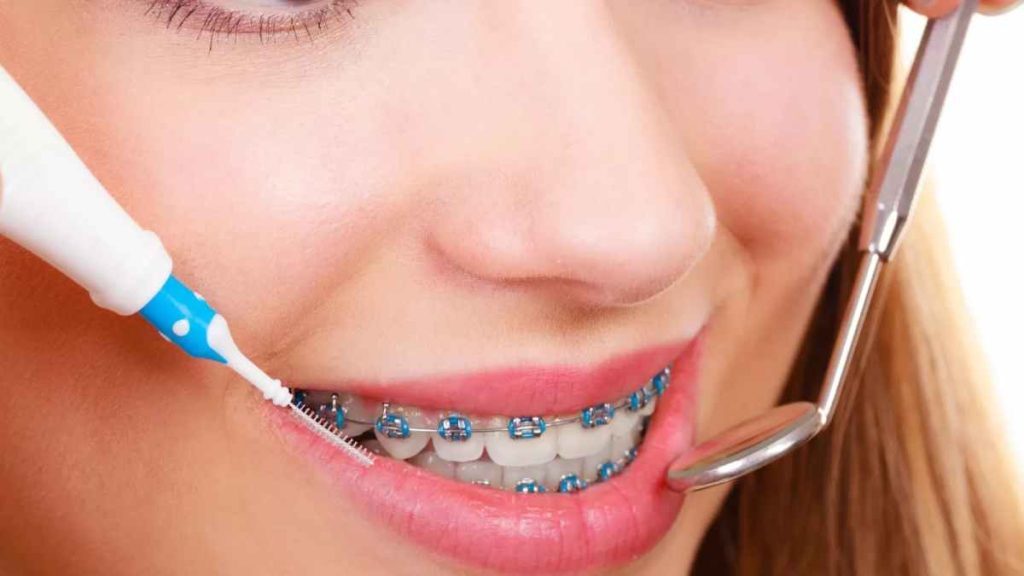Brace removal is an essential process in orthodontics. It is the final step in the orthodontic treatment process and can be a fascinating time for patients. Braces removal can be done in various ways, depending on the type of braces the patient has and the extent of the orthodontic treatment. It is essential to understand the various methods of braces removal and how to select the best one for their needs.
Planning
Before discussing how long it takes to get braces off, one must first understand the process of brace removal. The method employed in brace removal will determine how long it takes to get the braces off. One should plan before the process to ensure that everything runs smoothly.
Methods of Brace Removal
The most common braces removal method is simply cutting the wires and brackets off the teeth. It is the most straightforward and quickest method, but it can be uncomfortable for some patients and may cause damage to the enamel of the teeth. A more advanced method is using a unique tool called an orthodontic plier. The tool is designed to remove the braces’ brackets, wires, and bands without damaging the teeth.
Another method of braces removal is to use an orthodontic drill. It is a more invasive method, but it is the most effective. During this procedure, the orthodontist will use a special drill to remove the brackets and wires of the braces carefully. The method is often used in cases where the patient has a very complex orthodontic treatment plan and other methods cannot remove the brackets and wires.
An alternative to braces removal is to use an Invisalign retainer. It is a removable appliance made of clear plastic aligners that fit over the teeth. The aligners slowly move the teeth into their correct position without needing traditional braces. This method is often used for minor orthodontic corrections and is much less invasive than traditional braces.
In addition to these methods of braces removal, there are also laser-assisted orthodontic procedures. This method uses a special laser to remove the brackets and wires of the braces. This method is often used for more complex orthodontic cases where traditional braces removal is not an option. Laser-assisted orthodontic procedures are typically more expensive than other methods of brace removal, but they are often more effective and can provide faster results.
Depending on the type of braces a person has, and the extent of the orthodontic treatment, one of the above methods may be the best choice. When selecting the best method for braces removal, one must consult with one’s orthodontist to discuss the best options for each person’s case. A person’s orthodontist can provide the guidance they need to make the best decision for their needs.
No matter which method of braces removal one chooses, it is essential to follow all instructions provided by one’s orthodontist. With proper care, one’s mouth will look and feel great after brace removal. It will ensure that the braces are removed safely, and that one’s teeth remain healthy and strong. It also calls for patience, as good things take time.
How Long Does It Take to Remove Braces?
Many people choose to get braces to correct misalignment or crooked teeth. Braces are a combination of metal brackets, bands, and wires used to move teeth into the desired position gradually. After the desired result is achieved, the braces must be removed. The process of brace removal is straightforward, typically completed by a dentist or orthodontist. Most people usually ask how long it takes to get braces off.
The Process
Brace removal is a relatively brief procedure, which typically takes between 15 and 20 minutes. In some cases, the removal may take longer, depending on the complexity of the braces. The process begins when the dentist or orthodontist assesses the condition of the teeth and braces. It includes looking at the position of the brackets, bands, and wires. Once the assessment is complete, the dentist or orthodontist will use a unique tool to cut the wires and remove the brackets and bands from the teeth.
After removing the braces, the dentist or orthodontist will use a small dental drill to buff away any remaining cement used to hold the braces in place. It helps to ensure that all braces are completely removed and that no particles remain in the mouth. Once the braces have been removed, the dentist or orthodontist will inspect the teeth to evaluate the final results. Depending on the desired outcome, the dentist or orthodontist may recommend additional treatments such as retainer wear or additional orthodontic procedures.
Following removing the braces, the patient may need to return for follow-up appointments. It is necessary to evaluate the teeth and make any necessary adjustments. It is also essential to follow the dentist or orthodontist’s instructions regarding wearing a retainer and other aftercare instructions to ensure that the teeth remain in the desired position.
How Long Does It Take?
Brace removal is a relatively straightforward process. It typically takes between 10 and 20 minutes and requires no anesthesia. By following the instructions of the dentist or orthodontist and wearing a retainer, the patient can ensure that their teeth remain in the desired position. After removing the braces, the patient may need to come back for follow-up appointments to ensure that the teeth remain in the desired position. It is essential to understand those unique situations may make the process more prolonged.
Conclusion
Brace removal is an integral part of the orthodontic treatment process and should be done correctly to ensure the best results. The steps discussed in this paper can help ensure a smooth brace removal process in teeth. The orthodontist should assess the teeth, plan the removal process, prepare the teeth for the removal process, and remove the braces carefully. The orthodontist should also check the teeth after the braces are removed and may recommend that the patient wear a retainer to help keep the teeth in the correct position.

